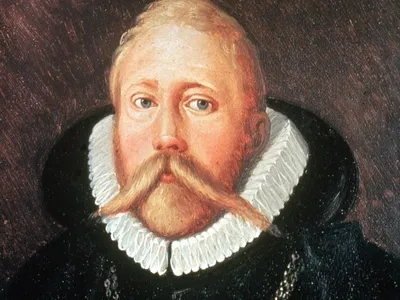
On March 5, 1590, Danish astronomer Tycho Brahe observed a comet. This was one of the many observations made by Brahe, known for his comprehensive astronomical observations.
The invention of the telescope allowed astronomy to peer further and further still improving technology and better equipment implies that our modem telescopes allow us to see way beyond what our predecessors imagined possible. And yet, there was a time when there were no telescopes when astronomical observations were still being done.
Danish astronomer Tycho Brahe is best known for measuring and fixing the positions of astronomical bodies and developing astronomical instruments. While his observations paved the way for future discoveries, the fact that these were the most accurate measurements from a time when the telescope had yet not been invented makes it all the more special.
Born in Denmark in 1546, Brahe’s parents were part of the nobility. Abducted at a very early age by his wealthy uncle, Brahe was raised by him and attended universities in Copenhagen and Leipzig
Drawn to astronomy
While his family wanted him to be a lawyer and he even studied the subjects, Brahe chose to pursue astronomy eventually. The total eclipse of the sun on August 21, 1560, and the conjunction of Jupiter and Saturn in August 1563- Brahe's first recorded observation -were natural events that pushed Brahe to devote his lifetime to astronomy.
In 1566, Brahe fought Manderup Parsberg, his third cousin and a fellow student, in a duel over who was the better mathematician. While Parsberg and Brahe went on to become good friends after this, Brahe lost a large chunk of his nose during the duel and had to wear a prosthetic nose to mask the disfigurement for the rest of his life. While this nose was long believed to be made of silver, the exhumation of his body in 2010 revealed that it was made of brass.
Brahe observed a supernova in the constellation of Cassiopeia in 1572 and the new star remained visible for nearly a year-and-a-half. He observed a comet late in 1577 and meticulously followed it till it remained visible in January 1578
Against prevailing theory
While prevailing theory dictated that disturbances in the atmosphere was the reason behind these. Brahe’s measurements showed differently. Brahe was able to show that the supernova never changed with regard to the surrounding stars. And based on his measurements of the comet, he was able to determine that it was at least six times farther away than the moon
These observations elevated Brake to a new level and he acquired an international reputation. His fame earned him a more comfortable life and the backing of the rulers as King Frederick II of Denmark offered him exclusive usage of his own island of Hven and financial support to carry out astronomical observations.
Brahe built a huge observatory on the island and diligently tracked the heavenly bodies, maintaining impeccable notes of the observations. During his time at Hven, Brake observed at number of comets. The one he observed on March 5, 1590 when he was employed in observing Venus was one of the last he tracked down while at the island.
Combined model
Even though Brahe's work laid bare the flaws of the system that was then used, he failed to embrace Polish polymath Nicolaus Copernicus's proposed model of the universe with the Sun at its centre. Brahe, instead, offered a combined model with the moon, and the sun going around the Earth, even as the five other known planets orbited the sun
Brahe's influence waned following the death of Frederick in 1588 and most of his income stopped under Frederick’s son Christian IV. He left Hven in 1597 and after short stays in a couple of places, settled in Prague in 1599 and stayed there until h death in 1601.
It was in Prague that German astronomer Johannes Kepler started working as Brakes assistant. Kepler. ironically. would go on to use Brahe's detailed observations to arrive at his planetary laws of motion and show that planets moved around the sun in elliptical orbits.
Picture Credit : Google




